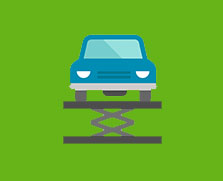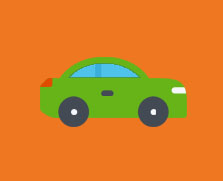Hyundai Tucson MOT Results
Registered in 201062.5% pass rate
from 333 tests in 2021
Pass rate by mileage
More MoT Results
Failure rates by item
Here you can drill down into the failure rates for each item on the test. We've also compared the rates to the average results for 2010 cars and highlighted areas where the Hyundai Tucson is unusually good or bad.
-
17% fail on
Brakes
(110% worse than other 2010 cars)
-
9.3% fail on
Brake performance
(130% worse than other 2010 cars)
-
4.5% fail on
Parking brake efficiency (sp)
(150% worse than other 2010 cars)
- 3.9% fail on Rbt (sp) (130% worse than other 2010 cars)
- 0.60% fail on Decelerometer (sp) (5 times worse than other 2010 cars)
-
3.0% fail on
Service brake performance
-
3.0% fail on
Rbt
- 2.7% fail on Service brake performance
- 0.30% fail on Service brake imbalance
-
3.0% fail on
Rbt
-
3.0% fail on
Parking brake performance
(2 times worse than other 2010 cars)
-
2.7% fail on
Rbt
(2 times worse than other 2010 cars)
- 2.1% fail on Parking brake performance (2 times worse than other 2010 cars)
- 0.60% fail on Parking (secondary brake performance) (7 times worse than other 2010 cars)
-
0.30% fail on
Decelerometer
- 0.30% fail on Parking brake performance
-
2.7% fail on
Rbt
(2 times worse than other 2010 cars)
-
1.2% fail on
Service Brake Efficiency (sp)
-
0.90% fail on
Rbt (sp)
- 0.90% fail on Service brake imbalance
- 0.30% fail on Decelerometer (sp)
-
0.90% fail on
Rbt (sp)
- 0.60% fail on Brake performance not tested
-
4.5% fail on
Parking brake efficiency (sp)
(150% worse than other 2010 cars)
-
5.1% fail on
Mechanical brake components
-
3.3% fail on
Brake discs and drums
(190% worse than other 2010 cars)
- 3.3% fail on Brake discs (190% worse than other 2010 cars)
-
2.4% fail on
Brake linings and pads
- 2.4% fail on Brake pads
-
0.30% fail on
Brake cables, rods, levers and linkages
- 0.30% fail on Lever
-
3.3% fail on
Brake discs and drums
(190% worse than other 2010 cars)
- 3.9% fail on Rigid brake pipes (4 times worse than other 2010 cars)
-
0.90% fail on
Service brake pedal or hand lever
- 0.90% fail on Hand lever (3 times worse than other 2010 cars)
-
0.60% fail on
Parking brake control
- 0.60% fail on Lever
-
0.60% fail on
Hydraulic systems
(5 times worse than other 2010 cars)
- 0.60% fail on Brake fluid (8 times worse than other 2010 cars)
- 0.60% fail on Flexible brake hoses
-
0.30% fail on
ABS / EBS / ESC
- 0.30% fail on Anti-lock braking system
-
9.3% fail on
Brake performance
(130% worse than other 2010 cars)
-
11% fail on
Suspension
-
4.8% fail on
Suspension arms
- 2.7% fail on Ball joint
- 2.4% fail on Pins and bushes
- 0.30% fail on Ball joint dust cover
-
3.3% fail on
Springs
-
3.3% fail on
Coil springs
- 3.3% fail on Coil spring
-
3.3% fail on
Coil springs
-
1.5% fail on
Anti-roll bars
- 0.90% fail on Linkage ball joints
- 0.60% fail on Ball joint
-
0.90% fail on
Macpherson strut
(4 times worse than other 2010 cars)
- 0.30% fail on Macpherson strut
- 0.30% fail on Attachment bracket and mounting
- 0.30% fail on Pins and bushes
- 0.60% fail on Shock absorbers
- 0.30% fail on Wheel bearings
-
0.30% fail on
Suspension rods
- 0.30% fail on Ball joint
-
0.30% fail on
Sub-frames
- 0.30% fail on Sub-frame
-
4.8% fail on
Suspension arms
-
10% fail on
Lamps, reflectors and electrical equipment
- 4.8% fail on Registration plate lamp(s) (150% worse than other 2010 cars)
-
3.0% fail on
Headlamp aim
- 2.4% fail on Headlamp aim
- 0.60% fail on Headlamp aim not tested
-
1.8% fail on
Headlamps
- 1.8% fail on Headlamp
- 0.60% fail on Stop lamp (79% better than other 2010 cars)
-
0.60% fail on
Direction indicators
-
0.60% fail on
Flashing type
- 0.30% fail on Individual direction indicators
- 0.30% fail on Side repeaters
-
0.60% fail on
Flashing type
-
0.60% fail on
Front and rear fog lamps
-
0.60% fail on
Rear fog lamp
- 0.60% fail on Rear fog lamp
-
0.60% fail on
Rear fog lamp
-
7.2% fail on
Body, chassis, structure
(83% worse than other 2010 cars)
-
5.1% fail on
Transmission
(2 times worse than other 2010 cars)
-
4.8% fail on
Drive shafts
(2 times worse than other 2010 cars)
- 4.8% fail on Joints (2 times worse than other 2010 cars)
-
0.30% fail on
Prop shafts
- 0.30% fail on Joints
-
4.8% fail on
Drive shafts
(2 times worse than other 2010 cars)
- 1.2% fail on Exhaust system
-
0.60% fail on
Doors
-
0.60% fail on
Other passenger's door
(7 times worse than other 2010 cars)
- 0.60% fail on Door condition (7 times worse than other 2010 cars)
-
0.60% fail on
Other passenger's door
(7 times worse than other 2010 cars)
-
0.30% fail on
Fuel system
- 0.30% fail on System
-
5.1% fail on
Transmission
(2 times worse than other 2010 cars)
-
6.6% fail on
Visibility
- 3.9% fail on Washers
- 2.7% fail on Wipers
- 0.30% fail on Bonnet
-
0.30% fail on
View to rear
- 0.30% fail on Mirrors
-
5.7% fail on
Tyres
- 4.5% fail on Tread depth
- 1.5% fail on Condition
-
2.7% fail on
Steering
-
1.8% fail on
Steering linkage components
- 1.8% fail on Track rod end
-
0.60% fail on
Steering gear
- 0.30% fail on Steering box
- 0.30% fail on Steering rack
-
0.60% fail on
Power steering
(6 times worse than other 2010 cars)
- 0.30% fail on Pipes and hoses
- 0.30% fail on Rams
-
1.8% fail on
Steering linkage components
-
2.4% fail on
Noise, emissions and leaks
-
2.4% fail on
Exhaust emissions
-
1.5% fail on
Compression ignition
- 1.5% fail on Malfunction indicator lamp
-
0.90% fail on
Spark ignition
- 0.60% fail on Malfunction indicator lamp
- 0.30% fail on Catalyst emissions
- 0.30% fail on Emissions not tested
-
1.5% fail on
Compression ignition
-
2.4% fail on
Exhaust emissions
-
1.2% fail on
Seat belts and supplementary restraint systems
-
1.2% fail on
Seat belts
- 1.2% fail on Condition
-
1.2% fail on
Seat belts
-
0.60% fail on
Road Wheels
- 0.60% fail on Attachment
-
0.30% fail on
Identification of the vehicle
- 0.30% fail on Registration plates




